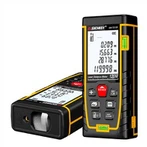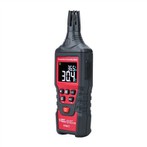How to use a digital multimeter to determine whether a line is open or short-circuited
The use of digital multimeters is now very common, playing an important role in circuit detection and wiring. The most basic and commonly used three physical quantities for measuring a multimeter are voltage, current, and resistance. The title precisely describes the measurement of these three basic physical quantities.
Measurement of voltage
A digital multimeter is used for voltage measurement, and in this case, the multimeter is equivalent to a voltmeter. Therefore, the multimeter is connected in parallel to the two ends of the electrical components or power supply on the line. Before measurement, it is necessary to determine whether the measured voltage is AC or DC, estimate its highest voltage value, and then select the corresponding AC voltage range or DC voltage range. If the magnitude of the voltage is unknown, it is safer to use the maximum voltage range gear.
Measurement of current
When measuring current with a digital multimeter, it is equivalent to an ammeter. Therefore, connect the multimeter in series with the tested circuit. Before measuring the current, it is also necessary to distinguish between direct current and alternating current, estimate the maximum current value of the current, and then select the corresponding alternating current range or direct current range. If the magnitude of the current is unknown, it is safer to use its maximum range.
Determine whether the circuit is open or short circuited?
Ensure that the circuit is not electrified before conducting detection and judgment. A short circuit is when the wire coming out of the power supply is directly connected without passing through the load, which is equivalent to connecting the two ends of the power supply directly to the wire. If it is AC power, then the live and neutral wires are connected together. At this point, as long as the power is turned off and the resistance level of the digital multimeter is measured, if the resistance is very small or zero, it indicates that there is a short circuit in the circuit. The buzzer gear of the multimeter can also be used, and if there is a short circuit, the buzzer of the multimeter will emit a beep sound.
Determination of Circuit Breaks
The three elements of a circuit are power supply, load, and intermediate links. As long as one of the elements does not conform to the circuit, it cannot form a circuit. If the power supply is ensured to be normal, the location of the circuit breaker may be at the load or intermediate link. The premise is to energize the line only when there is no short circuit in the circuit. If there is voltage measured at both ends of the load, it indicates that there is no open circuit in the circuit, but the load is damaged. If there is no voltage measured at both ends of the load, it indicates that there is an open circuit in the middle link, which may be an open circuit in the wire or an open circuit in the auxiliary equipment.






